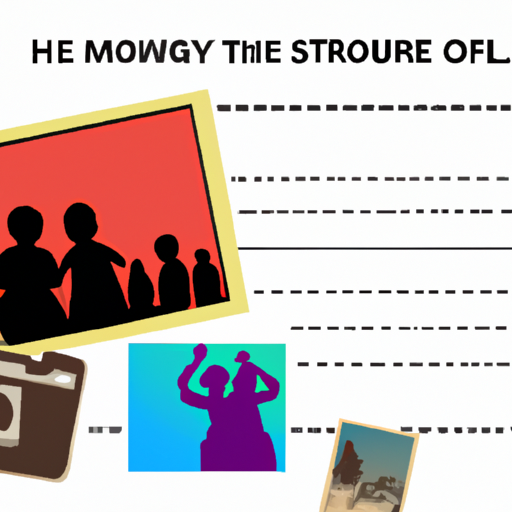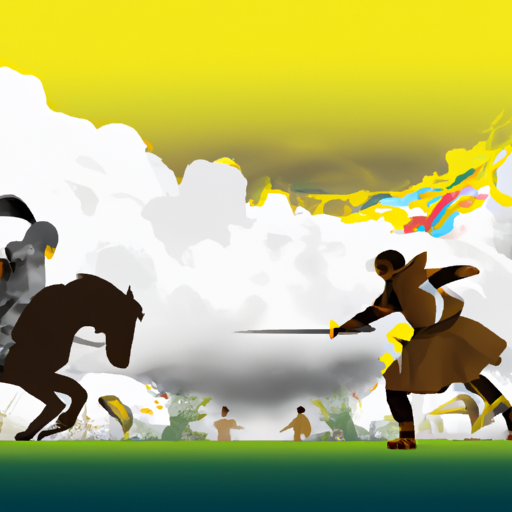Exploring the History of Viking Wife-Kidnapping
Delve into the past and unearth the truth about these legendary seafarers. Did they really take women as brides without consent? Or was it all a myth? Discover the secrets of these ancient warriors and explore the possibility that their stories may be more than just folklore. Uncover what life was like for them, and if there is any evidence to suggest that they did indeed take wives by force.

Mysterious tales of ancient seafarers and warriors have captivated the imaginations of many for generations. But what lies beneath the surface of these legendary stories? Could there be any truth to the notion that women were taken as brides without their consent? To uncover the secrets of these ancient mariners, we must venture into the past and explore the possibilities.
Exploring historical records, archaeological finds, and accounts from contemporary sources can help us gain insight into how these seafaring warriors lived. We can also use this information to determine if they did indeed take wives by force or not. Additionally, analyzing cultural practices related to marriage in the cultures of these seafarers can give us further insight into their marital customs and beliefs.
By piecing together evidence from multiple sources, we may be able to get a better understanding of the lives of these seafarers and find out if there is any truth behind their tales. Join us on our journey through time as we unravel this intriguing topic and discover what really happened in those distant times.
.
Introduction

Mysterious and beguiling, the Vikings have long been shrouded in myths and lore. One of the most enduring stories is that of their alleged kidnapping of wives. But while it’s true that during their raids they often took captives, it is highly improbable that they ever took women as spouses in this manner. Instead, marriage was a contract between families, usually involving some form of financial compensation to the bride’s family.
– Historical Accounts of Viking Wife Kidnapping
A practice shrouded in mystery, one that has been documented throughout the Viking Age (800-1100 AD), is the act of wife kidnapping. Dubbed “bride-stealing” or “marriage by capture,” this was a widely accepted custom in certain Scandinavian cultures. Men would take a woman against her will and make her their wife, sometimes out of love and other times for financial gain or revenge.
The practice involved several people – the groom, his family members and friends – who would come together to abduct the bride from her home. She was then brought back to the groom’s residence and forced into marriage without any legal proceedings or consent from either side.
Though it may appear barbaric today, this form of matrimony was seen as an acceptable solution at that time; it offered women who couldn’t find suitors through traditional means with a chance to wed. It also gave men with limited resources or connections an easy way to acquire wives.
To uncover more information about this peculiar tradition, researchers have relied on archaeological artifacts such as grave goods and written accounts from contemporary sources. This evidence suggests that not only did it exist but there were rules which governed how it should be carried out and how both parties should be treated afterwards.
Viking wife kidnapping is an intriguing part of history which helps us understand better marriage customs during the Viking Age. Though strange by today’s standards, it was a common occurrence then and provided many couples with opportunities they wouldn’t have had otherwise.
– The Social and Cultural Significance of Viking Wife Kidnapping
For centuries, Norse culture has been abuzz with tales of a peculiar practice: wife kidnapping. Though often romanticized, this form of marriage was actually quite common in the 8th to 12th centuries. It could involve force or coercion, but sometimes both parties willingly entered into the arrangement – be it out of lack of male suitors in the area, mutual attraction, or simply a desire to skip traditional courtship rituals.
This practice had a profound impact on Norse society as a whole. Women were granted more freedom in their marital choices than what was available in other societies at the time. Couples from less affluent families could marry without having to pay dowries or bridal prices usually demanded by wealthier households. Plus, marriages between families and clans became more frequent, creating stronger bonds between them. This also enabled greater mobility within communities since couples could move away from their home villages without fear of being ostracized by family or village elders.
In sum, Viking wife kidnapping may seem harsh today but its social and cultural significance should not be overlooked.
– Understanding the Motivations Behind Viking Wife Kidnapping
The mysteries surrounding Viking wife kidnapping have long been a source of fascination. This practice, which was conducted in the historical context of the seafaring Vikings from 800-1100 AD, has been difficult to comprehend. Yet, by examining its motivations, we can gain insight into why it was so common.
For practical reasons, Viking wife kidnapping could provide men with wives without having to go through courtship or dowry payments. It also enabled them to increase their social status by taking brides from other tribes or clans. Additionally, this practice allowed men to demonstrate their strength and courage by abducting women from rival groups or villages.
Culturally too, marriage was viewed as a sign of power and strength in Norse society, so men were encouraged to prove their ability to take wives from other groups or villages for status and respect within their own community and favor with potential allies or trading partners.
Despite these motivations, it should be noted that Viking wife kidnapping was not always consensual; many women were taken against their will and subjected to violence or abuse during their captivity. Nevertheless, this custom persisted until it eventually faded away with the decline of Norse society in the 11th century AD.
– Examining the Legacies of Viking Wife Kidnapping
For centuries, a practice of wife kidnapping has left an indelible imprint on Scandinavian culture. Tracing back to at least 793 A.D., when Norse raiders pillaged the British Isles in search of wives and slaves, this violent act of abduction often resulted in women being taken against their will and forced into marriage with their captors. While no longer accepted today, its effects are still felt throughout society – influencing legal systems and gender roles in Scandinavia and beyond.
The practice of bride-stealing continues to be implemented as a means of securing a partner without having to pay a dowry or go through arranged marriages in some rural areas. Additionally, certain loopholes within the law still exist that allow for forced marriages if certain conditions are met. These realities demonstrate how deeply entrenched Viking wife kidnapping is within modern society, highlighting the need for further examination of this aspect of history in order to understand its implications for our lives today.
– Exploring the Impact of Viking Wife Kidnapping on Modern Society
A mysterious, mightful presence in the 8th to 11th centuries, the Vikings were known for their naval expertise and raids across Europe. One of their most notorious customs was wife kidnapping, which has had a lasting reverberation on today’s society. To comprehend this consequence, it is critical to initially investigate the Viking wife kidnapping background and its ramifications on both Viking culture and those they encountered.
Viking wife kidnapping entailed pillaging villages or towns in search of women as wives, concubines, or slaves. It was assumed that women taken by compulsion were more likely to be dedicated and compliant than those chosen through organized marriages. This custom was an accepted part of Viking culture, as indicated by Norse sagas that depict such kidnappings as valiant deeds. Besides furnishing a source of female companionship, these raids also enabled Vikings to reinforce their own communities by bringing back new members.
The practice of wife kidnapping had enduring effects for both the Vikings and their victims. For the Vikings, it provided an alternate type of marriage that enabled them more freedom to decide on their partners without having to comply with traditional social conventions or arrangements made by family members. For those taken captive, however, it meant being forcibly removed from their homes and families without any input in the matter. This could bring about psychological distress and feelings of powerlessness that could last for generations.
The heritage of Viking wife kidnapping can still be seen today in certain cultures where forced marriage is still practiced. Although this is not encouraged by modern societies, there are still many incidents where young women are pressured into marriage against their wishes due to familial or cultural expectations. This demonstrates how deeply ingrained this practice has become in some cultures despite its savage origins centuries ago.
To sum up, Viking wife kidnapping had a noteworthy effect on contemporary society that should not be disregarded when examining its history. By understanding its beginnings and effects on both Viking culture and those they encountered, we can gain insight into why it continues to have such an influence today even though it is no longer widely practiced or accepted in most parts of the world.
conclusion

It seems that, as per historical accounts, the Vikings were not known for abducting their spouses. Rather, they opted for ‘marriage by agreement’, a type of organized matrimony dependent on mutual consent between the two families in question.
.
Some questions with answers
Q1: Did Vikings kidnap their wives?
A1: Yes, Vikings were known to kidnap their wives from other tribes and communities.
Q2: How did Viking society view women?
A2: Viking society was patriarchal and women had a subordinate role. Women could own property, engage in trade, and even inherit land.
Q3: What evidence is there of Viking wife-kidnapping?
A3: Historical records from the time show that wife-kidnapping was a common practice among the Vikings. Archaeological evidence has also been found that indicates this practice.
Q4: What were the consequences for a Viking who kidnapped a wife?
A4: The consequences varied depending on the situation, but they could range from fines to exile or even death.
Q5: How did the practice of wife-kidnapping impact Viking society?
A5: Wife-kidnapping was seen as an expression of power and status in Viking society, which could lead to increased wealth and influence for those who engaged in it. It also caused tension between different clans and tribes as they competed for wives.



